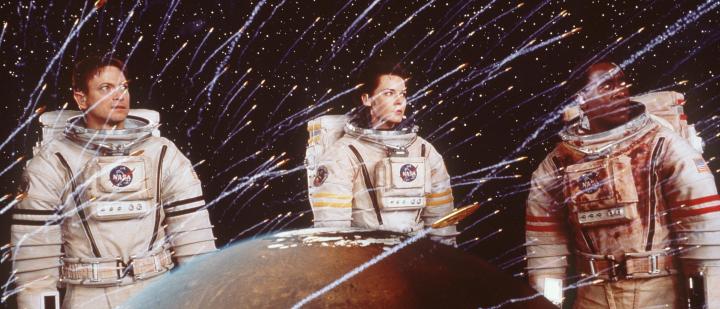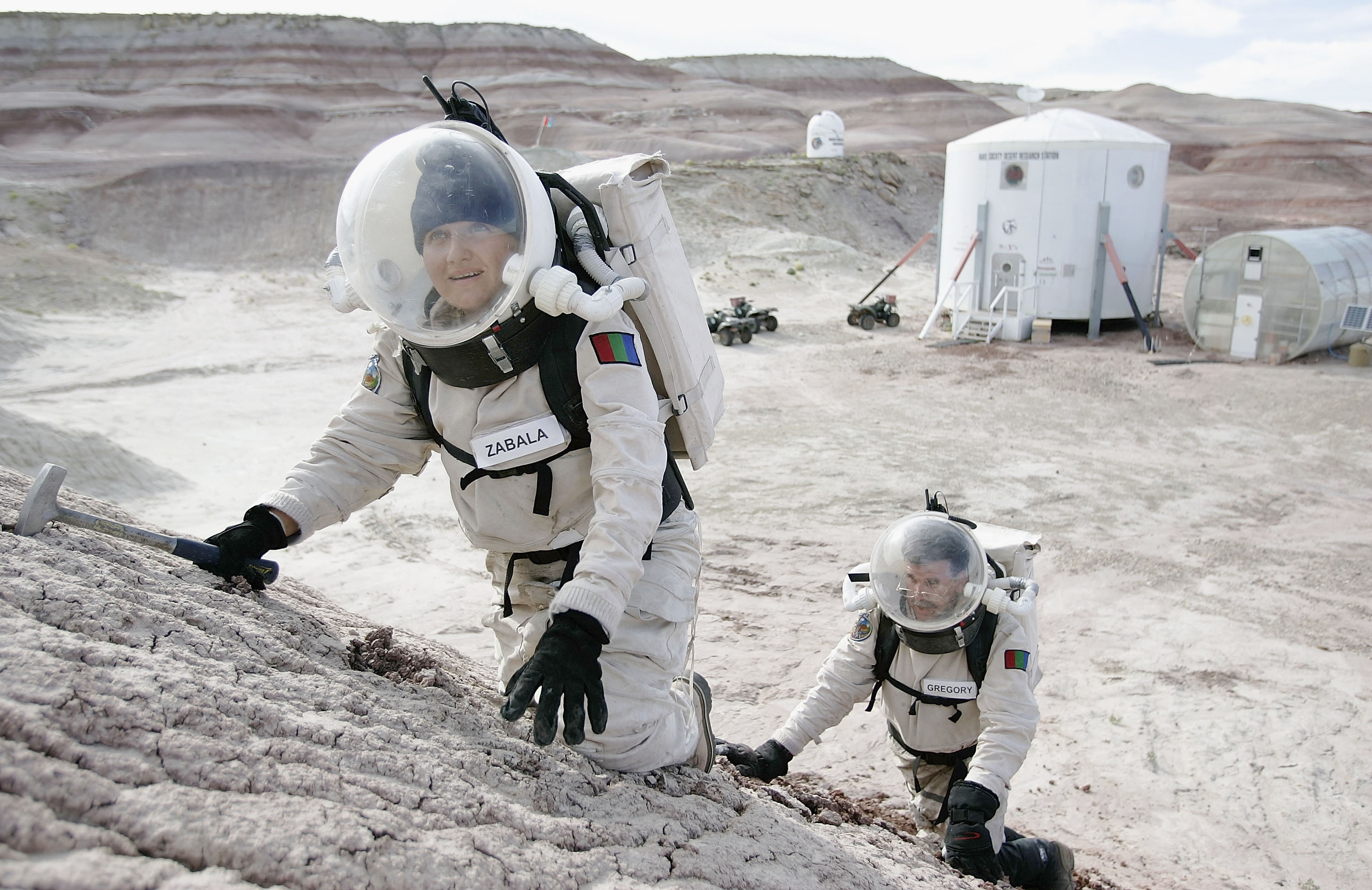MAVERICK LIFE: SPACE
Mission to Mars – hopes, delusions and dodgy promises

On 4 February, President Donald Trump, delivering his State of the Union address as if it was an episode of The Apprentice, touted the recently created Space Force and said the US should be the first nation to plant its flag on Mars.
“I am asking Congress to fully fund the Artemis programme to ensure that the next man and first woman on the Moon will be American astronauts, using this as a launching pad to ensure that America is the first nation to plant its flag on Mars,” said US President Donald Trump in his State of the Union Address.
He wasn’t the first person to say such things: in April 2010 President Barack Obama said, “We’ll start by sending astronauts to an asteroid for the first time in history. By the mid-2030s, I believe we can send humans to orbit Mars and return them safely to Earth. And a landing on Mars will follow. And I expect to be around to see it.”
Since the Apollo 11 Moon landing, many US presidents, from John F Kennedy, who wanted to land on Mars before he even thought of the Moon, to George Bush who, as noted by the New York Times, announced in 1989 on the 20th anniversary of Apollo 11, “an initiative to return to the moon and then to go to Mars”. “Why the Moon? Why Mars?” Bush asked. “Because it is humanity’s destiny to strive, to seek, to find. And because it is America’s destiny to lead.”
The Red Planet has been the eyepiece of many national telescopes. For years, speculation on what it would take to land humans on its crust (and colonise it) have run wild, with claims ranging from hopeful and cautious to outlandish and irrational.
Where did all start? By 1957, the USSR had launched its first satellite, Sputnik, and was already looking at exploring Mars. A year later, in 1958, the National Aeronautics and Space Administration (NASA), “an independent agency of the US Federal Government responsible for the civilian space programme, as well as aeronautics and aerospace research” was established by President Dwight Eisenhower, with a mission “to discover and expand knowledge for the benefit of humanity”.
The rush to space exploration had turned into a fierce rivalry between the US and the USSR, the world’s two leading powers having big ambitions in sight: the Moon and Mars.
On 10 October 1960, the Soviet Union’s Marsnik 1/Mars 1M No 1 “launched for an intended Mars flyby”. The spacecraft didn’t survive the launch and crashed and burnt on the ground. It wasn’t until NASA’s Mariner 4 that a spacecraft successfully orbited. On 14 July 1965, “it sent 21 photos of the Red Planet back to Earth”.
Four years later, in 1969, the US struck again by landing the first humans on the Moon. Apollo 11 and Neil Armstrong’s famous line, “That’s one small step for man, one giant leap for mankind”, became etched in our collective memory.
Yet the last time a human walked on the Moon was in 1972, almost 48 years ago. And the leap from the Moon to Mars isn’t an easy one: while the Moon is on average only 384,400km away, Mars is on average 225 million kilometres away. Getting there would be a complex mission, to say the least, and current technology would struggle to enable us to make that long a journey.
In addition, there are some things we still need to understand, like the fact that “Mars lacks an ozone layer, which on Earth shields us from lethal doses of solar ultraviolet radiation”, says NASA; the atmosphere, made mainly from carbon dioxide, is thinner than on Earth, which means humans wouldn’t be protected against harmful UV radiations; the average temperature on Mars is -64 degrees C (versus about 17 degrees C on Earth), and there are occasional cosmic rays and dust storms that can make life as we know it a tad rougher.
Talking to Houston, We Have a Podcast, NASA astronaut Dr Stan Love explains: “We managed to send six crews to the Moon 40 years ago when we had a 10 times larger share of the federal budget to work with and nobody’s been back since. And part of that is because the Moon, at 250,000 miles, is 1,000 times further into space than the space station, 1,000 times, so that’s the difference between two steps and a mile. That’s the difference between walking a mile and going to Europe, okay? So, the space station is, you know, I drive down to the gas station. The Moon is, I’m going to Europe, okay?”
Nonetheless, landing humans on the Red Planet, and possibly colonising it, is more topical than ever. Apart from NASA and its Mars Exploration Program (to which you can even send Mars-themed Valentine’s cards), which remain vague about when it might become possible to send humans to Mars, Elon Musk’s Space X has an “aspirational goal to send our first cargo mission to Mars in 2022”.
“You want to wake up in the morning and think the future is going to be great – and that’s what being a spacefaring civilisation is all about,” says Musk. “It’s about believing in the future and thinking that the future will be better than the past. And I can’t think of anything more exciting than going out there and being among the stars”.
Meanwhile, in the rivalry between rich billionaires investing in space exploration, Amazon boss Jeff Bezos would rather skip Mars for “free-floating space pod colonies”.
And then there are the scams.
In 2012, a Dutch entrepreneur, Bas Lansdorp, launched Mars One, offering to send people on a one-way trip to Mars by 2023. Using Apollo 11 nostalgia and stirring phrases like, “It was one of the few moments in history where the whole world came to a standstill for a positive reason”, Lansdorp launched a “Red Planet Colony” programme, promising that humans would soon – by 2023 – be settling on Mars.
The company went on a search for potential colonists eager to claim their one-way ticket to Mars. The mission was to be documented like a TV reality show (think Keeping Up with the Martians) using the money generated from the show to finance the programme. The scam lasted seven years until it crashed into bankruptcy in February 2019. Ironically, the project seemed to have mimicked a speculative opinion piece written in the New York Times by English physicist and author Paul Davies in 2004, sans the technical and financial requirements.
But the rush to land the first human on Mars continues: The Mars Society, an organisation created in 1998 by US aerospace engineer and author Dr Robert Zubrin is, according to its website, “the world’s largest and most influential space advocacy organisation dedicated to the human exploration and settlement of the planet Mars”. Its mission is “to educate the public, the media and the government on the benefits of exploring Mars and creating a permanent human presence on the Red Planet”. The organisation has Analogue Research Stations it uses as “laboratories for learning how to live and work on another planet”.

HANKSVILLE, UT – JUNE 16: Veronica Ann Zabala-Aliberto from Arizona State University inspect plants that are growing in a greenhouse outside the Mars Desert Research Station Thursday, June 16, 2005, several miles northwest of Hanksville, Utah. The greenhouse is testing a closed system that recycles waste and water from the station to grow the plants that may be used on a station on Mars. The research station based in the Utah desert is sponsored by the Mars Society and is used for scientific research and practice for a manned mission to Mars in the future. There are several groups a year that man the station one to two weeks at a time. (Photo by George Frey/Getty Images)

HANKSVILLE, UT – JUNE 16: Veronica Ann Zabala-Aliberto (L) from Arizona State University and Hugh Gregory (R) a space-flight historian climb a hill outside the Mars Desert Research Station June 16, 2005, several miles northwest of Hanksville, Utah. The research station based in the Utah desert is sponsored by the Mars Society and is used for scientific research and practice for a manned mission to Mars in the future. There are several groups a year that man the station one to two weeks at a time. (Photo by George Frey/Getty Images)
It has a chapter in South Africa, formed in 2000, although, as chapter head Carl Scholtz explains, “The local chapter has pretty much become dormant. I have just taken over the task to relaunch the SA chapter with my primary objective being to leverage the Mars theme to attract young people to STEM activities; and establish an SA entry for the University Rover Challenge, which I believe to be the most exciting robotics competition around.”
Similar projects are being commissioned; the United Arab Emirates aim to settle on Mars early in 22nd century and has tasked architect Bjarke Ingels to create a “Martian vernacular architecture” near Dubai. Built using 3D-printing technology, Mars Science City will spread over 17.5 hectares, and should cost around R2 billion. They are still working on it.
- Image from Bjarke Ingels Group website, https://big.dk/#projects-mars
- Image from Bjarke Ingels Group website, https://big.dk/#projects-mars
- Image from Bjarke Ingels Group website, https://big.dk/#projects-mars
- Image from Bjarke Ingels Group website, https://big.dk/#projects-mars
NASA is also looking at “mushroom” houses for life on Mars. “NASA is exploring technologies that could grow structures out of fungi to become our future homes in the stars and perhaps lead to more sustainable ways of living on Earth as well,” it says.
Yet landing and settling on Mars might not be as easy and simple as some might believe. A 2019 report by the Science and Technology Policy Institute (STPI) said the earliest date a mission to Mars orbit could be feasible was 2037, with an estimated cost of $120.6 billion (±R1.8 trillion) for the first mission. To put things in perspective, $120 billion is roughly Google’s cash reserve and the amount consumers spent on apps last year.
In the words of Bill Anders, test lunar module pilot of Apollo 8, “the first human space flight to leave Earth’s orbit”, said in an interview with the BBC in December 2018 that “sending crews to Mars is almost ridiculous”.
“What’s the imperative? What’s pushing us to go to Mars? I don’t think the public is that interested.” ML
If you would like to share your ideas or suggestions with us, please leave a comment below or send an email to [email protected] or [email protected] and we will reach out.
Sign up for our newsletter to get the best of Maverick Life delivered to your inbox every Sunday morning.





















 Become an Insider
Become an Insider